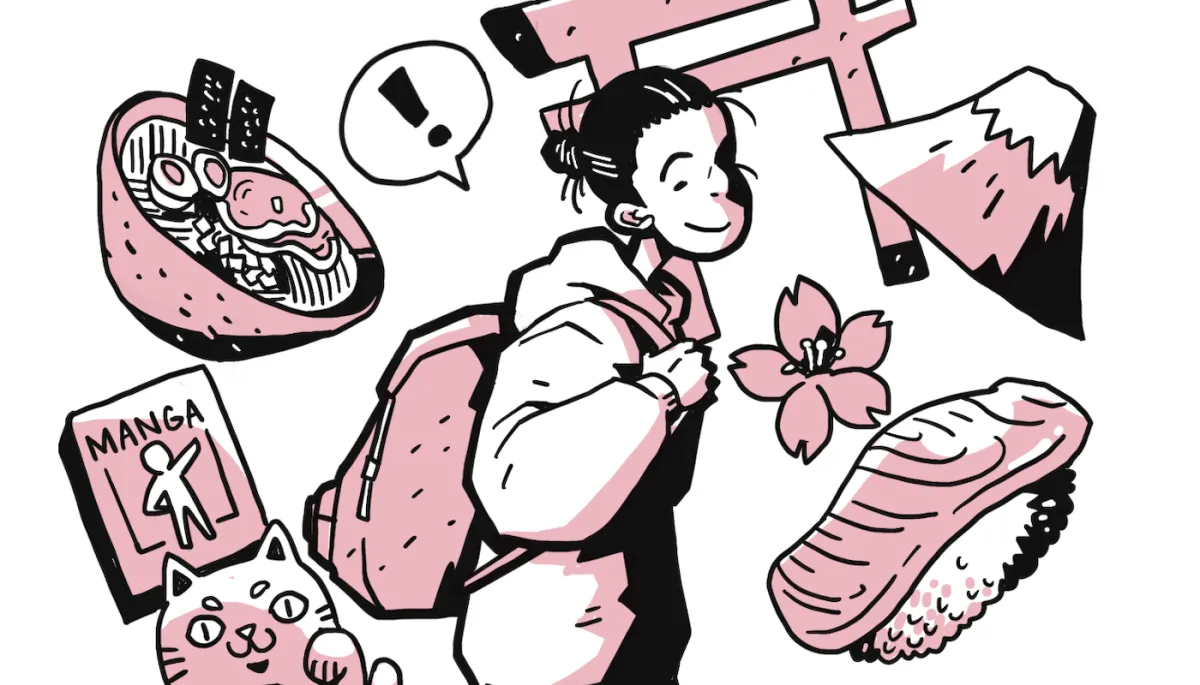
Lost and Found in Translation: Design Notes from Japan - Part 1: All Topping UI
Earlier this year, I returned to Japan for some family matters. But I wasn’t just hanging out with my nieces (who, by the way, are the cutest girls in the world—you can’t change my mind) or eating food I can hardly find in North America. I was being a UX designer through and through.
Japan is fascinating on its own, but for UX designers, it’s an especially intriguing learning ground—both in good ways and bad.
This is the first part of a short series (likely four parts) where I’ll review, analyze, and learn from some interesting UX/UI and branding practices I encountered in Japan.
Today, let’s start by talking about the "All Topping" UX/UI.
The “All Topping” UI
Every time I land in Japan, I’m immediately hit by the overwhelming amount of information flooding my eyes and ears. Japan is a meticulous, crowded place. Every corner you turn, you interact with some form of information—and it always starts spinning the gears in my head.
UX/UI isn’t limited to digital screens. Wherever you interact with information, there’s a user interface. And how you feel during that interaction—good, bad, or otherwise—is what we call user experience.
Perception of UX varies based on who you are, where you are, and when and how you interact with something. Naturally, cultural and social norms heavily influence and define what “good” experience looks like.
Japanese culture excels at preserving traditions but struggles with clearing away what no longer serves a purpose. This double-edged sword often shows in UX/UI design: trying to please everyone stretches resources thin and creates what I call an "All Topping" situation.
What’s "All Topping"? Imagine ordering a pizza and throwing every topping on it—extra cheese, olives, spicy sauce, pineapple, onions, more cheese. Can you really say each topping makes it better? Or are they just there because they can be? (Also, who thought pineapple on pizza was a good idea?)
When it comes to UX, the "All Topping" approach is exactly what you want to avoid.
A Real-World Example
Here’s a photo of a post office near my house in Japan.
I don’t even know where to begin. The most important element—the posting window—is buried under a flood of signs and ads. Critical announcements are hard to notice, while trivial information stands out more than it should. Can you honestly guess where you drop off your mail into?
In UX design, we often use Design Thinking—a framework that breaks problem-solving into steps like Empathize, Define, Ideate, Prototype, and Test. The first two stages focus on deeply understanding the users. Only after that do we develop solutions.
What’s happening at the post office is the complete opposite.
Imagine coming in just to mail something. Instead of a clear path, you're met with information overload. Analysis paralysis kicks in: too many options, too little clarity. Worse yet, some of the signage feels more like it’s meant to protect the staff (from complaints, legal liability, etc.) rather than genuinely helping the users. Ironically, because the signage is so unclear, customers still end up asking staff for help—defeating the whole purpose.
Of course, the intended purpose heavily shapes the UI. If, for some reason, their goal was something other than creating a clear, hands-free experience, then it’s possible this design represents the best UX/UI they could offer for that objective. However, I would say that possibility is slim. A clear, concise, user-focused sign would almost certainly have been far more effective.
Bathroom Poster Syndrome (BPS)
The "All Topping" UX/UI often triggers what I call Bathroom Poster Syndrome (BPS): overly complicated interfaces that cause mild frustration and confusion.
Take Japanese public bathrooms, for example.
There are often so many instructions posted that it’s hard to even find the flush button.
But hey, my intention is clear. I just want to flush and get on with my day—not read a wall full of do’s and don'ts.
Sure, some signage is necessary. But a wall like this suggests that somewhere along the way, basic design thinking was lost. This wall should simply look like... this.
(The top one is the flush button, the bottom is the emergency call button)
What It Matters To Me
Even in places like a bathroom stall, people interact with information. They have an experience—and they make decisions based on it. Why not make that experience better, easier, and more thoughtful? Design isn't just about aesthetics. It’s about clarity, empathy, and trust.
There’s something fundamental to consider here: Even small design decisions shape someone's experience—positively or negatively. Whether it’s a sign at a post office or a flush button in a bathroom, clarity and empathy matter. In a world full of noise, thoughtful UX isn’t just good design—it’s good humanity.
And that’s the real adventure I’m on—learning how to design for people, not just for systems.
The adventure continues... Stay tuned.
Thanks for reading,
taq


